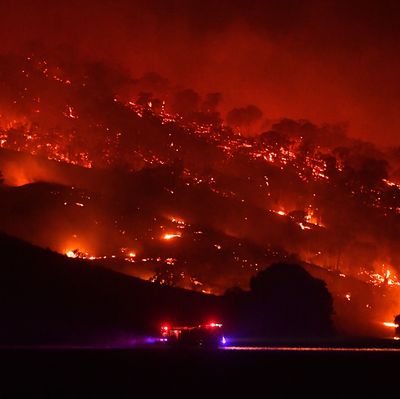
Since they started in September, the bushfires raging across Australia have killed at least 28 people and likely more than a billion animals, obliterated insect species scientists hadn’t even discovered yet, driven hundreds of thousands of people from their homes, and utterly ravaged the New South Wales landscape. Rain on the horizon looks unlikely to extinguish the blazes, which have grown so sprawling and intense, they’re now creating their own weather. Weather composed primarily of fire.
The Washington Post reports that a frightening variety of apocalyptic-sounding meteorological events has cropped up in the region. Fire tornadoes, or fire whirls — huge, uncontrollable vortices of ash, flaming debris, and fire whipped up by strong, hot winds — have been reported. These monsters may also be called “fire devils,” a nod to their wildly chaotic nature, and can exacerbate ember attacks. That’s when powerful gusts pick up burning embers and spirit them through the air, eventually dropping them in other locations that may also ignite.
The sustained, sometimes record-breaking temperatures have created thunderstorms with enormous mushroom-looking clouds — pyrocumulonimbus, or fire clouds — which “act like chimneys, venting heat and sucking in surrounding air to intensify fires, making their behavior more unpredictable and unstoppable,” per the Post. And last week, two hulking fires merged into a megafire spanning two states, NSW and Victoria, and 2,300 square miles. Having effectively made charcoal of millions and millions of acres, some fires, the Post reports, are now restarting on previously burned land.
Although Australia is projected to finally get substantial rain this week, it probably won’t be enough to douse the blazes completely. “With the period of drought we’ve experienced, we’d need to get extended periods of consistent rainfall in order to get the moisture content up enough for it to put out fires … which is unlikely,” NSW Rural Fire Service spokesperson Anthony Bradstreet told the Guardian. Meaning the end is not yet in sight. We’ve compiled a guide to how you can help Australia right now.





